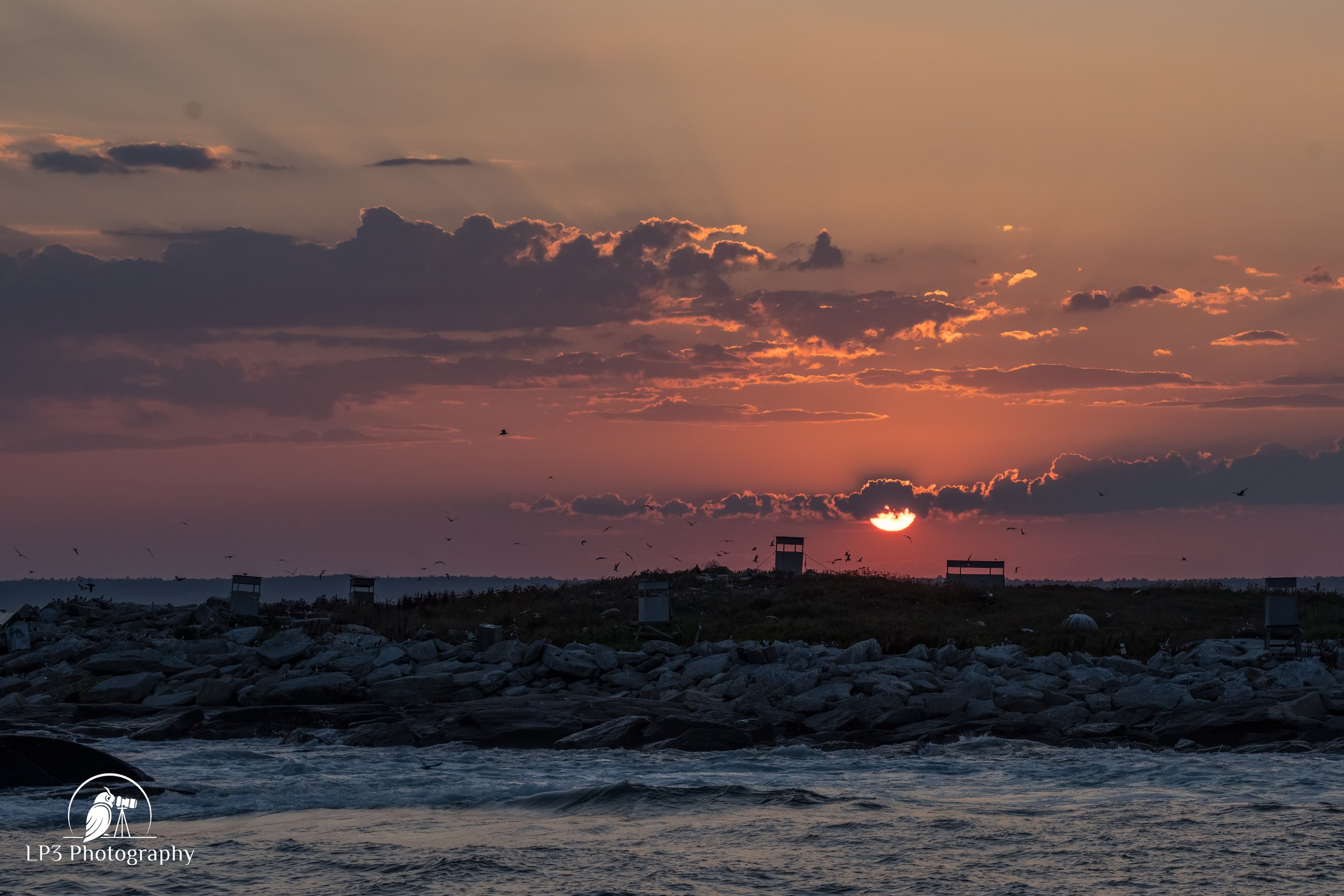by Laurie Pocher
Mother Nature conspired against us, and we had to abandon our plans to bird Monhegan Island due to rain, wind and fog in the forecast. We pivoted to Evergreen Cemetery in Portland instead.
The morning started out slowly, with a handful of Mallard ducklings and just a few species of songbirds around the Duck Pond: Yellow-Rumped Warbler, American Redstart, Chestnut-Sided Warbler, Tennesee Warbler, Common Yellowthroat, Northern Parula, Baltimore Oriole, and Red-Eyed Vireo.
We walked the big loop trail along the power line cut and through the woods, where we picked up Eastern Wood-Pewee, White-Breasted Nuthatch, Brown Creeper, Swamp Sparrow, Black-and-White Warbler, Black-Throated Green Warbler, Yellow Warbler, Magnolia Warber, Canada Warbler, Wood Thrush, and a pair of Scarlet Tanagers. A couple of Ovenbirds and Red-Bellied Woodpeckers called from deeper in the woods, but we weren’t able to see them.
We emerged from the wooded trail and found a handful of Eastern Bluebirds, a couple of Northern Mockingbirds, a Chipping Sparrow, and seven Red Crossbills feasting on pine cones.
Other species included Mourning Dove, Herring Gull, Turkey Vulture, Northern Flicker, Eastern Phoebe, Great Crested Flycatcher, Gray Catbird, Blue Jay, Black-Capped Chickadee, Tufted Titmouse, American Goldfinch, Chipping Sparrow, Red-Winged Blackbird, Brown-Headed Cowbird, and Northern Cardinal. In total, we saw 45 species at Evergreen Cemetery. You can see the full checklist from Evergreen here: https://ebird.org/checklist/S138512961
Team MYBC members made a few other stops within the 24-hour Birding Challenge timeframe. At Hinckley Park, we picked up a Black-billed Cuckoo, Swainson’s Thrush, Savannah Sparrow, Black-throated Blue Warbler. At Capisic Pond, we added Chimney Swifts, Double-Crested Cormorants, Black-crowned Night-Heron, Warbling Vireo, Brown Thrasher, Cedar Waxwing, Orchard Oriole, Cooper’s Hawk, and Northern Waterthrush. Other birds seen in backyards and while traveling included Rock Pigeon, Ruby-Throated Hummingbird, Red-Tailed Hawk, Broad-Winged Hawk, Hairy Woodpecker, Pileated Woodpecker, Tree Swallow, Barn Swallow, and Carolina Wren. At Fore-River Sanctuary, Luke Marston helped us round out our team count by adding American Black Duck, Great Egret, Snowy Egret, Belted Kingfisher, and Prairie Warbler.
All tolled, we managed to log 78 species for the Team MYBC Birding Challenge total!
There’s still time to donate to York County Audubon Birding Challenge! We’ll be collecting donations through May 31, so click here to sponsor Team MYBC!







































































































































































































